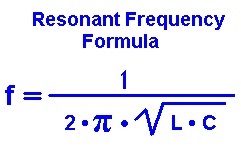Other Parts Discussed in Thread: LDC1001
I’m trying to find the impedance of a carbon fibre composite material with the LDC1000evm. Next to inductive and resistive properties, the material is likely to have capacitive properties. First I want to setup a correct measuring method while excluding the capacitive properties, which would work on for example a metal. After that I want to include the effect of the capacitive properties. To understand how to analyse the data I have used the document‘LDC1000 Inductance to Digital Converter (Rev. A)’ I do, however, not fully understand how to determine the impedance and would greatly appreciate it if anyone could help me out. With the outputs of the sensor I see two possible methods to get to the impedance.
I added page 9 of the document as an attachment.
1.With the proximity data.
In the documentation it is stated that Y=Proximity Data/2^15
If Y is the admittance the impedance can be calculated with Z = 1/Y
Questions I have about this:
Is Y actually the admittance? I can’t seem to find any documentation on the definition of Y.
What is the proximity data exactly? How is it determined? It implies that it is the proximity of a sample, however without knowing the properties of a sample can this be determined?
2. With Rp and the frequency
The impedance can also be solved for the circuit shown on Figure 10 (page 9), if the Rp, frequency, inductance and capacitance are known.
Question I have about this method:
With the impedance transformation that is performed to get Rp (page 9), what assumptions are made? It seems as if the frequency is assumed to be the natural frequency. Is this correct? And if so why can this be assumed, considering that the inductance L(d) is dependent on the sample?
Is this impedance transformation still valid considering that the capacitance is also dependent on the material when C is replaced by C(d)?
If possible, I would greatly appreciate it if anyone could provide a more elaborate derivation of the impedance transformation that is done to determine Rp.
Any help would be greatly appriciated.



